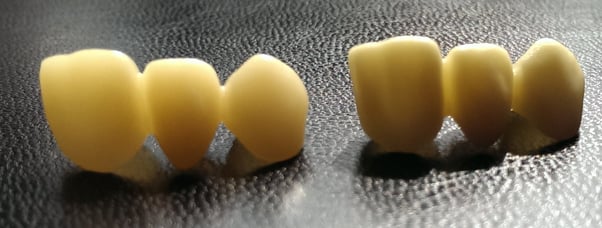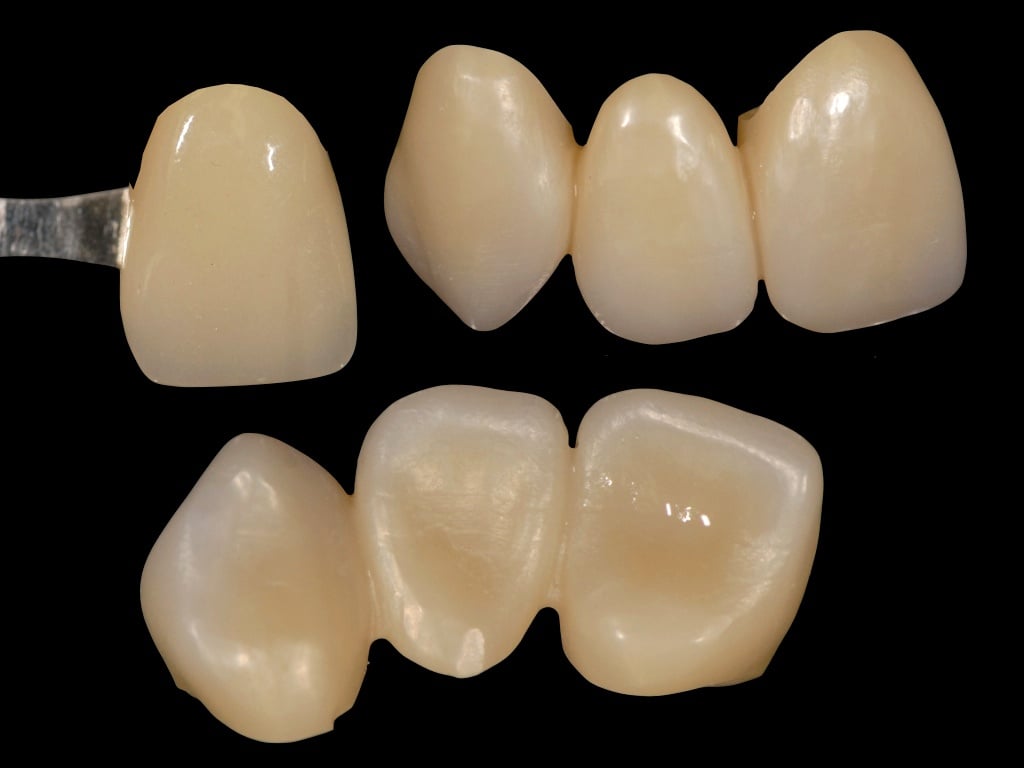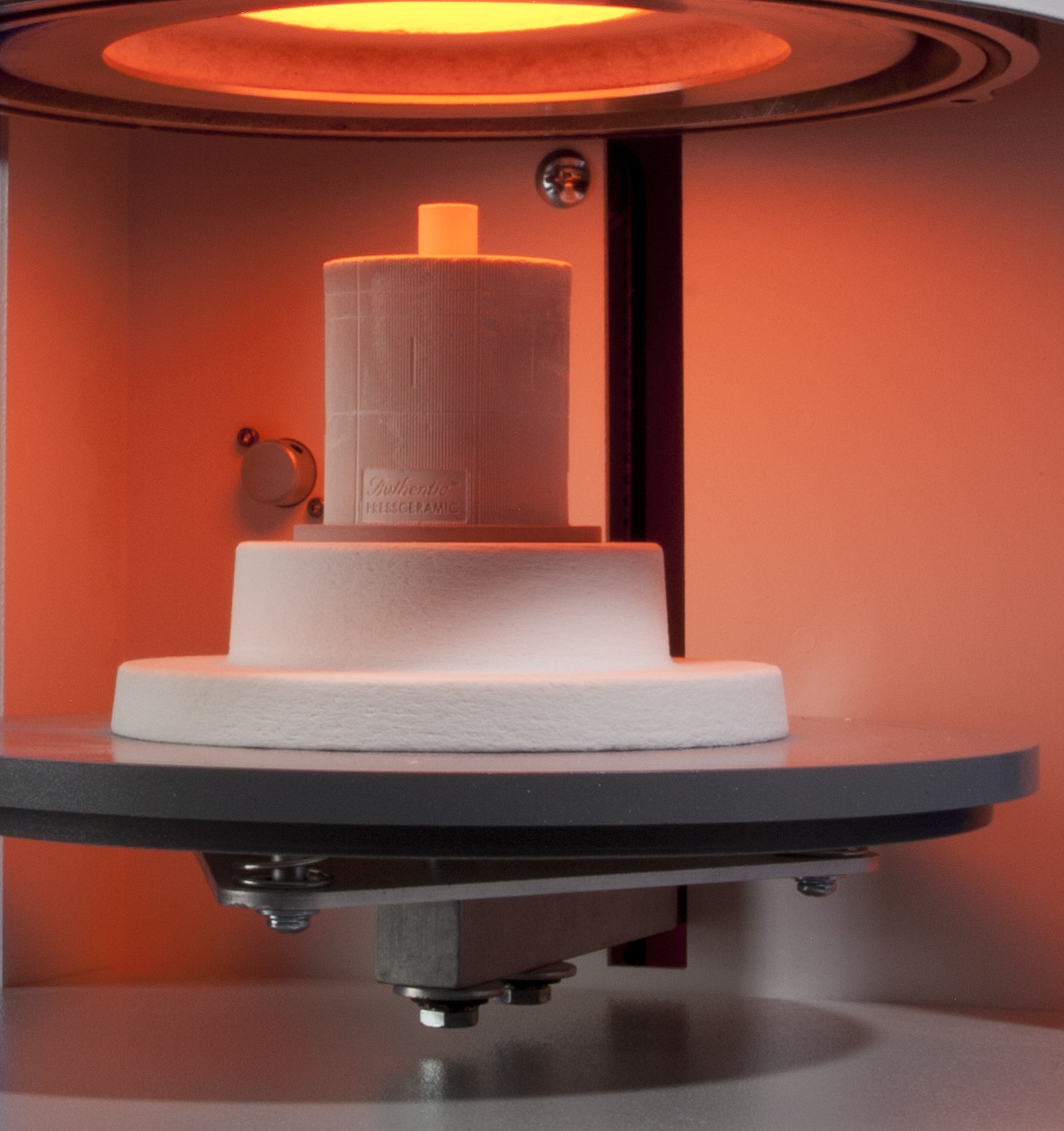Let’s face it, achieving spot on shades with full contour zirconia isn’t always easy. There are so many variables that can affect the outcome of getting the right shade. Here are some variables to consider:
Sintering Temperature
Sintering temperatures can have an affect on the outcome of the shade as well as the translucency of full contour zirconia restorations. At higher temperatures, you begin to lose chroma and gain translucency. Example, when using Whip Mix Vericore HTX, for optimum translucency you would want to fire at 1550C with a 2 hour hold. To enhance the chroma and still achieve an acceptable translucency, you could drop your maximum temperature as low as 1450C with a 2 hour hold. However, if you sinter at 1500 C with a 2 hour hold you can get both great chroma and great translucency, and you can sinter both HTX and HT zirconia’s on the same cycle.
Sintering Beads
Sintering beads can also play a role in the final result of your desired shade of a full contour zirconia. We recently sintered two 3 unit bridges milled out of the same Vericore HTX, shade A2 disc, on the same firing cycle - one with Alumina beads and the other with Zirconia beads. You can see there is clearly a difference in this picture I took with my cell phone in natural lighting. The one the left was sintered with zirconia beads providing a more translucent restoration where the one on the right was sintered with Alumina beads, providing a more opaque restoration.

Shaded or white zirconia – which will allow us to achieve the best results?
When using a white zirconia for full contour restorations, you will need to pair it up with a green state coloring system. This will allow the color to saturate the zirconia to avoid the color getting wiped away from any necessary adjustments. There are traditionally three techniques being used when using a green state coloring system.
- Using the dipping technique you dip the milled unit in the appropriate shaded liquid anywhere from 30 – 120 seconds depending on the manufacturer’s recommendation. This technique is the quickest and gives you a monochromatic restoration.
- The brush on technique will give you more esthetic results by having control of the placement of the green state coloring system. More time is involved but you are able to customize the final result providing a more lifelike restoration.
- The hybrid technique uses a combination of the dipping and brush on technique giving the restoration both a body and enamel shade.
When using a pre-shaded zirconia for full contour restorations, you gain the advantage of skipping the green state coloring techniques saving on labor. You are also able to see more consistent results. The disadvantage is that you will need to add multiple shades and disc sizes of zirconia to your inventory plus factor in the time for disc changes if you aren’t running multiple mills.
Evaluate your workflow and determine which option is best for your lab. There are a plethora of resources on the net with many different techniques when it comes to coloring full contour zirconia. Explore them and find one that works for you. One that I refer to frequently is Zirkonzahn’s step by step coloring instructions for both anterior and posterior full contour zirconia with their Aquarell water based system. Find a coloring system that works well with your zirconia of choice and unleash your inner artist… let your passion shine through as you recreate beautiful smile after smile!



.jpg)





.jpg)



Leave a comment